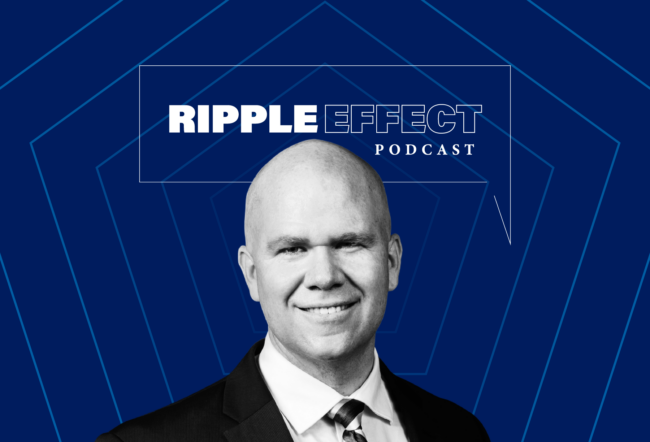In a move that celebrates both the contributions of women and African-Americans, abolitionist Harriet Tubman will become the face of the new $20 bill, relegating President Andrew Jackson to the reverse side of the currency. Kate Clifford Larson, historian and author of Bound for the Promised Land: Harriet Tubman, Portrait of an American Hero, is joined by Michael O’Malley, professor of history at George Mason University, to discuss the importance and impact of the decision.
They discussed the announcement on the Knowledge at Wharton show on Wharton Business Radio on SiriusXM channel 111. (Listen to the podcast at the top of this page.) An edited transcript of the conversation appears below.
Knowledge at Wharton: What was your reaction to this announcement, which was made by U.S. Treasury Secretary Jack Lew?
Kate Clifford Larson: There are no words to describe how I felt. Thrilled. Excited. I cried a little bit. What an amazing moment, not only for Harriet Tubman but for women and this nation. It really was a great decision and a great announcement.
Michael O’Malley: I was delighted. I think she’s a good figure. Historians disagree about whom they might pick. There are lots of people you could pick. The idea that it has to be a particular general or a particular president is relatively new.
Knowledge at Wharton: But what about some of the other people out there? As important as this move is in terms of recognizing the contributions of women and African-Americans, isn’t there still more that could be done?
O’Malley: It’s one thing you can do. I think you could have a didactic message. In a roundtable that I was at this summer, Secretary Lew pointed out that there’s a lot of real estate on the back of the bill and most people don’t know what’s on there. You could have a little mural or almost a graphic novel representation of American history. Now that they’re used for static symbolism, they could be used for educational purposes.
Larson: Well, that’s the point. No one really looks at the back of the bill, so while it’s great real estate for more people, more information to be placed on them, the point is the front of the bill is what everyone looks at and Harriet Tubman is a fabulous choice. I think women should be on half of our currency and not just on the back. I think this is an opportunity to change more of our currency than just the $20 bill.
“Women should be on half of our currency and not just on the back. I think this is an opportunity to change more of our currency than just the $20 bill.” –Kate Clifford Larson
Knowledge at Wharton: A lot of us know a little of the story of Harriet Tubman, but a lot of people don’t remember the fact that she was a spy for the Union Army during the Civil War.
Larson: That’s right. She was hired by Union officers to spy behind enemy lines in South Carolina. She was very effective and was paid for her services. She was paid not fully for all the work she did, but she did get paid by the government for that work. She tried to get recognition for it later in her life to get a veteran’s pension. Eventually, the government gave her a pension as a Civil War nurse but not for her service as a soldier and a spy.
Knowledge at Wharton: There are a variety of places that recognize Tubman’s contributions, but there is not enough recognition of how the work she did could have changed the path of what happened in the Civil War.
O’Malley: I’m not an expert specifically on Tubman. I think she is a ferociously courageous and important figure, a really remarkable person and, in that sense, eminently deserves to be there. My biggest concern is that she’s kind of been reduced to a soothing figure for second-graders. Just as it’s hard to confront some of the actions that Andrew Jackson took, it’s relatively hard to confront the reality of the Trail of Tears. It’s hard to confront the reality of slavery and the degree to which escaping from slavery was so difficult and so unlikely for most people. If I had to criticize the choice of Tubman, it would be that it’s too easy to reduce her to a safe figure.
Larson: I think Michael has a point about how for the past half-century, she had been reduced through children’s literature to this much smaller figure, and the issue of slavery and the pursuit of freedom had been sort of sanitized. But I think in the past 15 years, that has changed a lot. For those of us who have been trying to champion Tubman’s real life story, things have begun to change. Now we have two national parks in her honor that will be telling the truth of her life and addressing the issues of slavery and the enslavement that she endured, and the new biographies that have come out in the past 10 years have certainly answered a lot of those questions and changed that narrative that you find in the children’s books.
There’s a state park in Maryland and the Harriet Tubman Underground Railroad Byway, so things are changing now with Tubman on the $20. I hope that over the next couple of years, when people Google her, a lot of that juvenile stuff and the myths will fade away and the true life story of Tubman will pop up and spark conversation about slavery and the legacy of slavery. How the legacy of this woman Harriet Tubman has brought us to this point where she now will grace the $20 give us this opportunity to continue a conversation that is not complete.
Knowledge at Wharton: There are other people that have had such an amazing impact on this country. Maybe Dr. Martin Luther King Jr. is somebody that should be considered as well.
O’Malley: Oh sure, there are lots of people you could put. I think you could make an argument that the money supply should vary more frequently. You could argue the strength of the United States is the diverse, creative, generative power of its people, and we could have a variety of figures from different realms of life. Some countries adopt that. They have cultural figures, inventors, engineers, politicians, a variety of people. You could argue that we should take that kind of approach.
Tubman is a great choice to reinforce the point that African-Americans were vital in their own liberation. The common tendency, which you see in movies like Steven Spielberg’s Lincoln, reinforces the idea that freedom was something that white people gave to black people. There are many well-intentioned white people who worked hard to end slavery, but black people were the primary drivers of their own liberation, and I think Tubman’s image helps to reinforce that.
“Harriet Tubman is a great choice to reinforce the point that African-Americans were vital in their own liberation.” –Michael O’Malley
Knowledge at Wharton: Changes to other bills are being made as well, including the addition of prominent suffragist leaders on the back of the $10 and Civil Rights leaders on the back of the $5. It was an amazing run that women’s groups were making to try to get these changes made over the last several years.
Larson: It’s been great, and I think a lot of people became aware of that last year or maybe late 2014. I know that it was at least a couple years before that, Harriet Tubman and other women were under consideration for the redesign of the $20 or the $10. That had been circulating for a while but it really blew up last year when the campaign started, and then Secretary Lew came out with his announcement that he wanted to replace Hamilton on the $10.
Knowledge at Wharton: Lew basically put this out there for open comment. It’s one thing to say that and another to follow through because often when politicians throw something out for public comment, it’s just to appease a group of people.
O’Malley: He seems to have made a good-faith effort to really solicit a lot of public opinion. They also went out of their way to get the opinion of historians and economists, and they seem to have listened very well. Tubman is both a familiar choice and a choice with a more radical potential in our history. In that sense, she’s a very good choice.
Knowledge at Wharton: We received an email from an African-American listener who said the decision tarnishes Tubman’s legacy because black people were used as currency during slavery. What are your thoughts on that?
O’Malley: I wrote a book about the history of money and the problem of race, and it is true that slaves were capital. They were like gold in the Southern economy. Imagining slaves as being racially different or a different species allowed them to function as gold, and she escaped that capitalization. She freed herself and then insisted, often to the point of violence, on freeing other people. I think in that way, she’s a very interesting symbol to put on the money. She escaped from being commodified.
Larson: I absolutely agree. Tubman was an incredible entrepreneur in her own right, and that should be recognized as well. She fought for equal pay for equal work. As a spy, she was not paid what other men who were spies were paid. She battled to have her own pension and then in the last 50 years of her life, she was an entrepreneur. She ran many businesses, including a brick-making business and all sorts of things that she ran out of her house, and earned money to support many people who were dependent upon her.
“There’s always been public pressure in the depictions of money, and there should be. It’s a democracy.” –Michael O’Malley
During the Civil War, she set up a kitchen and laundry and earned money that way. She taught newly freed women how to work and charge for their services as they sold the goods that they baked and the laundry work that they did for the Union Army. She was an entrepreneur even when she was an enslaved woman. At one point, she was savvy enough to convince her enslaver to let her hire herself out, and she paid her enslaver $60 a year while she kept the extra earnings and then purchased a pair of oxen so she could increase her earning power. She was an entrepreneur, and I think she would be thrilled that this honor has been bestowed on her.
O’Malley: African-Americans were extremely common on American money, particularly on Southern money before the Civil War. A lot of people don’t realize it but private banks and even private individuals could print their own money before the Civil War, and there were roughly 9,000 kinds of circulating paper money by 1850. In the South, the vast majority of that paper money has depictions of slaves. They’re usually symbolic depictions of slaves as happily working in the cotton fields or doing some kind of agricultural work, but they’re very common. It’s a profound difference to have a woman who escaped slavery as the figurehead on a bill rather than a symbolic representation of an imaginary slave on money.
Knowledge at Wharton: It is interesting also that it was Andrew Jackson who got bumped off of the $20.
O’Malley: You can argue very easily that Jackson should never have been on there in the first place since he hated central banks and hated paper money. My understanding is they were going to do the $10 because there’s a schedule for replacement and the $10 was next. But among the historians who met with Secretary Lew in the summer, there was a lot of argument that if you’re going to remove somebody, it should not be Hamilton, who’s the father of the American financial system.
Larson: Right, and that Jackson was a slave holder, like some of our other founding fathers. But Jackson’s whole story put together and writ large is just all the more appalling given our sensibilities today and our diversity today. He needs to be gone. Unfortunately, he’s going to be on the back of the bill, still which is a little troubling.
Knowledge at Wharton: In terms of the public’s reaction with all of the unrest that has gone on in the United States for several years, does having this statement made by the government potentially help that process?
O’Malley: I think there’s been some opposition from people who feel like it’s a kind of debasement. Secretary Lew said that it was extraordinarily powerful to send a message to the world that the most used currency in the world will have a woman on it and a woman of color. That’s a powerful message, particularly in a country where women aren’t regarded as equal or as potentially equal but who nevertheless use American money. And it sends a powerful message about how Americans are rethinking the meaning of their own history and the meaning of slavery in their history. I see it as potentially a powerful good, though there will be resistance to it.
Larson: I agree there will be tremendous resistance, and we’re seeing that already online and in the news media with presidential candidates Donald Trump and Ben Carson saying they didn’t think that Tubman belonged on the $20. But it sends an incredibly important message that women’s work and women’s contributions to our nation are valued, that we are equal to the responsibilities and the accomplishments, and that black lives matter. They really do, and it’s time to show it in our public memorials. There aren’t enough about women or African-Americans or other people of color, and it’s time. And our currency is one of the biggest public memorial spaces that we have.
Knowledge at Wharton: Several articles talked about Secretary Lew bowing to public pressure. Do you buy into that?
O’Malley: Sure, I do. We always bow to public pressure. There have been long-term movements, particularly from Southerners, to get President Ulysses S. Grant off the money, and then there are lots of people that want Grant there. He’s a powerful political symbol of the Civil War and the northern victory. He’s associated with Reconstruction, and there’s a lot of argument that Jackson is there to appease the South. As Grant is there, Jackson is there. There’s always been public pressure in the depictions of money, and there should be. It’s a democracy. We should be responding to public pressure. No historian would argue that history exists in a vacuum separate from the politics and culture of the people who are the heirs of that history.
Larson: The placement of Tubman really speaks to the diversity of our democracy and how we are showing that in a very physical and public space.
Knowledge at Wharton: Well, Michael, then I’ll throw this out as kind of a wrap up, then. If he was bowing to public pressure, then realistically, what did the treasury secretary want to have happen to the $20 bill?
O’Malley: He said very clearly he wanted to send a message that Americans valued the contributions of women in history and that they valued the contributions of African Americans and that the struggle against slavery was a deeply important part of our historical legacy. He wanted to convey that and I think he did or he wanted to [and] he was persuaded that that was a particularly important thing to convey. I mean, that’s how he’s put it. I think being open to public opinion on this is a reasonable thing.
I think it would also be worth having a debate about whether or not, as you said, currency should be rotated so that we have a variety of figures who represent the diversity of American culture.



